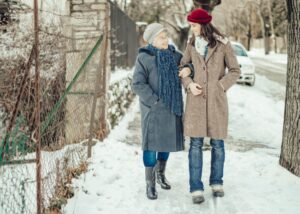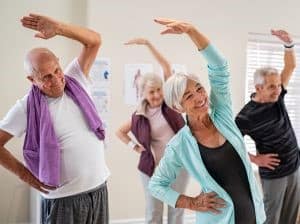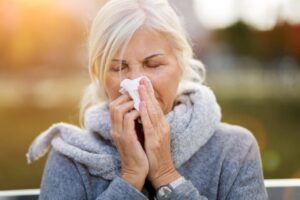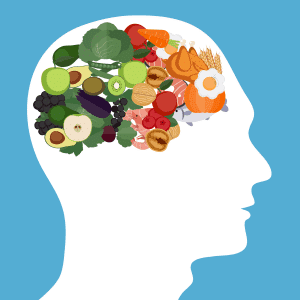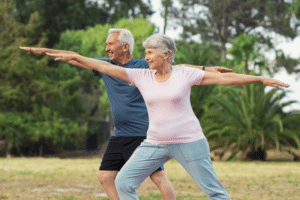
Birthdays are special events with different traditions and meanings across individuals and cultures. Within Western culture, we often associate birthdays with candles and cakes, but one celebrates in various ways.
However, as caregivers, it is vital to understand the cultural background and personal preference of how you can celebrate your aging parent’s birthday in a caregiving center.
Therefore, it is important that you make your elderly parent feel loved and special during their birthdays. These special occasions are extra special for aging couples, often marked with reflection and nostalgia.
Even if you do not want a big celebration, there are plenty of unique and fun ways to keep the day special.
It is important to make the day filled with joyful memories. This is important so that you can mark the milestone occasion in a different style. You can also develop ways to actively include parents and older relatives who have difficulty moving around, which might be challenging.
Therefore, to make it a special occasion, you can find a flower delivery today and send fresh blooms to their doorstep. Add a special note to make it an exceptional present for them.
If you are planning to celebrate your parent’s birthday in a senior care center, then it is crucial to understand their need and personal preferences.
In this article, we will provide ideas for celebrating your aging parents’ birthday in elderly home care centers.
Ways to Celebrate Your Parent’s Birthday in Senior Living
As you see your parents age and retire another year, you are responsible for making them feel special on that day. Nothing can make them happier than celebrating it in an old-aged home or care center.
Here are some tips for celebrating your elderly parent’s birthday in a senior care community.
1. Plan a Month Ahead
When it comes to celebrating the birthday of your elderly parents, there is nothing more exciting than planning ahead. The way you organize and set things ensures that the occasion will be a truly memorable day for them.
One key aspect of the planning is to decide on the time and date of the celebration. You can communicate this information clearly with your family members and close friends who will be attending with you.
Therefore, plan ahead to which caregiving center you would like to visit. You can look for a less-recognized place within the community and less favorable facilities for senior citizens.
You need to seek permission and ensure you inform the center at least one month prior. This will give them time to make the necessary arrangements and then look forward to the celebration.
2. Know Their Preferences
When organizing a birthday celebration, collect all the necessary information to know the individual choices and preferences.
Your parents might enjoy a quiet gathering with their close family and friends. Or it can be a big celebration with numerous attendees. It is necessary that you make their choice your first preference.
On the other hand, your parents might prefer a casual and relaxed atmosphere, whereas others might also enjoy a formal occasion.
You can cater to their desire to make a memorable experience when you are certain of their choice and preference. Ultimately, you can plan what they like, making all the difference in creating an event they will surely enjoy.
3. Decorate with Flowers
When you plan to throw a party for elderly parents, you can decorate the area with flowers. It is simple, yet it is an effective way to make the celebration more festive.
Whether you opt for a colorful balloon, banners, streamers, or other types of decoration, adding their favorite flowers can transform the entire setting.
Hence, decorating the venue can be an ideal way to celebrate and pay tribute to your parent’s interest. Now, this can be either their favorite color or their hobby.
Thus, the thoughtfulness of decorating the party area will showcase your love for them. In addition, celebrating their birthday in a caregiving center will assist them in creating memorable moments.
4. Order Special Food
Celebrating your elderly parents’ birthday is a social occasion to cherish. In the same manner, food plays a bigger part in the celebration.
You must add food that will evoke their memories of their younger days. For example, they prepare or order dishes that they enjoy the most.
You can also share your meal with the people of the caregiving center. There is no greater feeling than sharing your favorite meal with people who do not get the same.
By incorporating their favorite treats and foods, you can show your love and honor for them on their special day.
5. Invite the Grandchildren
As your parents get older, it is vital that you celebrate their special day surrounded by their loved ones. One of the greatest ways you can do that is by involving the grandchildren.
Take your children along with your parents to the senior care living. This will give your parents some quality time with their grandchildren.
However, these younger members of the family can bring excitement and energy to the party that adults cannot match. Similarly, involving grandchildren in the preparation and planning of the party is a wonderful way to bond with them and create lasting memories.
Therefore, from simple, thoughtful gifts to handmade cards, grandchildren can contribute meaningfully to celebrate with their beloved grandparents. Hence, when you include them in the festivities, you celebrate the honoree and pass down traditions and values to the next generation.
6. Include Music
Some indescribable charms of music bring people from all walks of life together. It helps them to transcend barriers of culture, belief, and age.
Thus, incorporating music into your elderly parents’ birthday celebration can be an efficient medium to create a festive surrounding. This will make the occasion truly inspiring.
Playing their favorite songs and those that hold special can evoke warm feelings of nostalgia, happiness, and joy. You can tap into a reservoir of emotions that is unique to every individual.
From listening to classic times from the ’60s and ’70s, songs have grabbed the attention of their loved one’s attention. Therefore, music will assist in setting up a mood and add to the overall enjoyment of the celebration.
7. Get Them a Special Gift
Think about what your elderly parents would really appreciate as a gift. There can be varying things that they require or are in need of.
On the other hand, while celebrating your parents’ birthday in caregiving centers, you can also shower them with the gifts they need.
In contrast, it could be something they always wanted but have yet to get an opportunity. Whatever you choose, ensure you reach for them and spread happiness among the others who did not receive it earlier.
For instance, it can be either gifting the senior citizens with woolen clothes or blankets to help them in the winter.
8. Make Time to Listen to Their Stories
When you are planning a celebration in a senior care community, you get an opportunity to listen to different stories. This allows you to realize that there are people with an adventurous life.
Many elders have stories to share about their experiences and journey. Whether it is their tale of their grandchildren or their own profession, take time to listen to their stories.
This is a wonderful way to make them feel valued and appreciated. Listening to their stories not only offers a chance for us to learn more about life. Similarly, it also creates an opportunity for senior citizen to share their knowledge and wisdom with the younger generation.
9. Set Up a Virtual Setting for Members Who Cannot Attend
When you celebrate your elderly parent’s birthday, there might be a time when everyone cannot make it. To keep them included, you can set up a virtual celebration.
With virtual celebrations, you can bridge the gap and make sure that your family and friends are present in the moment.
Thus, it might be different from the usual birthday celebration. With a virtual celebration, one can offer the opportunity to involve those who are physically unable to be there.
It is because of technology that allows us to create an engaging and interactive experience. However, you can still make any celebration memorable and meaningful for your family.
10. Prepare Care Packages
While you celebrate your parent’s birthday with other senior citizens, you can either give away or send something they would enjoy.
One of the best ways to do that is by packing some goods they need. It can be either daily use commodities or some clothes.
Furthermore, you can also contact the management team members and learn their special preferences. It can be either a small gift or getting something from their favorite store.
Therefore, you can do the same for your aging parent. Think about the things that they prefer the most and are important for them in daily use. These minute details will make them smile on their special day.
11. Donate for A Cause
When you think about it, there are several ways in which your parents might have an interest.
Thus, one of the best ways you can find out what your parent is passionate about. You can ask them and then research a couple of organizations supporting the cause.
Furthermore, you can also ask your friend and family member for a recommendation as well.
Hence, shortlist one or two caregiving centers and give them a call to get information on how you can help them.
12. Plan an Outing or Trip
Planning out a trip is the best way to plan something and make your parents feel special. It could be a visit to the beach or visiting the countryside.
If they are interested in history, then plan to visit museums or historical heritage sites. This will allow them to relive their memories and create new ones.
Offer them something special, it can be either a new outfit or an accessory, in order to help mark the occasion.
If you live in an environment with a comparatively warmer climate and vacation spots like amusement parks and beaches nearly, consider planning for one.
Take them one afternoon in the nearby location where your parents can spend time relaxing while enjoying some fun activities.
13. Do Something They Love
If you want to do something memorable and special for your parent, give them a break from their daily routine.
You can take them to a senior caregiving community where they can meet new people and spend some time listening to them. On the other hand, you can also pack enough food to accommodate the people in the center and your family members.
14. Write Letters
It is one of the greatest ways to express your love and appreciation for the people you care about.
Thus, you can write down everything you love about your mother or father and how they have added value to your life. These add a few anecdotes and showcase how much you care for them.
You can also write small notes of appreciation for the senior members in the care living. This will make them feel loved and accepted in the community.
Wrapping Up
Celebrating a parent’s birthday is meaningful for any child, and there are numerous creative ways of observing them.
These can include planning an outdoor birthday celebration and sharing memories with the members of care centers. Most significantly, they know the right way to value the enormous impact of kindness and love on the family members.
There are even other ways to celebrate your elderly parent’s birthday:
- Giving personalized photo albums by creating a timeline for previous years.
- Plan a special outing. It can be a visit to a park or museum.
- Can plan a surprise visit from loved ones they have not seen in a few years.
- Plan a surprise delivery of their favorite flower.
- Create short video messages from their friends and relatives.
- Bake them their favorite cake.
- Gift them a spa or massage voucher to help them relax.
The most important thing to remember is that your parent deserves the best birthday. It is evident that your parents will not be able to participate as they used to, so make sure you have backup plans.
From the ideas mentioned above, ensure the day is filled with laughter, happiness, and love. After all, our elderly parents deserve nothing less than the best.


